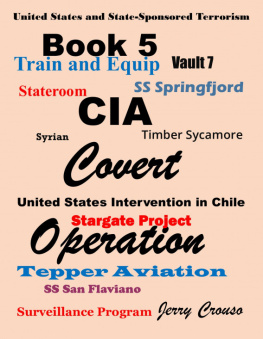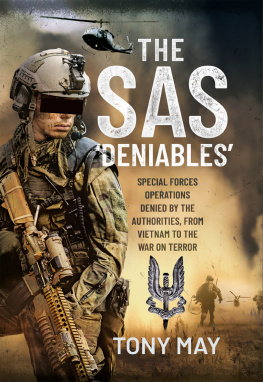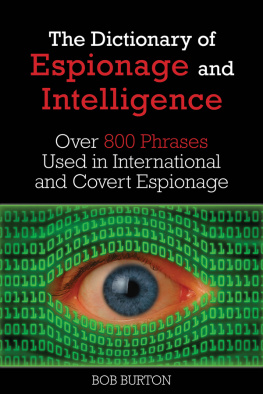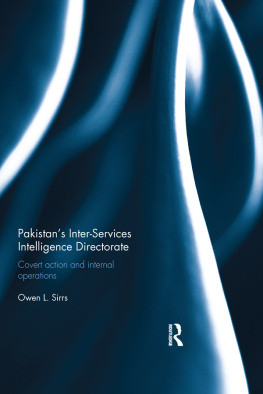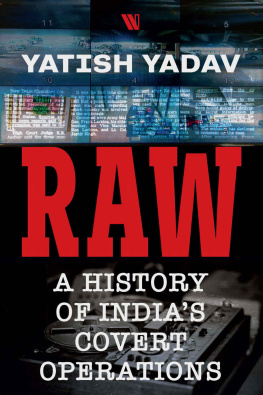Author
Jerry Crouso
PUBLISHED BY:
Derlie Crouso
Book 5 CIA Covert Operations
2017
Thank you for downloading this book. Itremains the copyrighted property of the author, and may not bereproduced, copied and distributed commercial or non- commercialpurposes. Please encourage others to download their own copy atSmashwords.com. where they can also discover other works by thisauthor.
Thank you for your support
The information throughout this E-Book isavailable by researching internet. from the resources listed. Theinformation put in one place to save you time.
The information available through this E-Bookis provided solely for informational purposes on an "as is" basisat user's sole risk. The author makes no guarantees as to theaccurateness, quality, or completeness of the information and theauthor shall not be responsible or liable for any errors,omissions. or inaccuracies in the information or for any relianceon the information. User is solely responsible for verifying theinformation as being appropriate for user's personal use.
References
https://en.wikipedia.org/
http://www.truthmove.org/
https://simple.wikipedia.org
www.deephistory
https://www.cia.gov/
http://www.motherjones.com/
https://nsarchive.wordpress.com/
http://wikivisually.com
https://www.google.com/
http://www.wikiwand.com/
http://www.thirdworldtraveler.com/Blum/CIADrugs_WBlum.html
http://pizzagate.wiki/
https://www.hrw.org/
www.coldwar.org
http://www.vietnamgear.com/
https://www.index.va.gov/
http://militaryhistorynow.com/
http://nsarchive.gwu.edu
http://www.wikileaksusa.org
CONTENT
Chapter 81 SS San Flaviano
Was a 1950sBritish oil tanker owned by Eagle Oil and Shipping Company, aBritish subsidiary of Royal Dutch Shell. She was built by CammellLaird in England in 1956 and attacked and sunk by the CIA in Borneoin 1958.
San Flaviano had a sister ship, SanFortunato, built by Cammell Laird in the same year. The two shipswere part of a substantial investment program to renew Eagle Oil'sfleet with larger and more modern tankers. Between 1950 and 1960the company took delivery of at least 16 new tankers.
Bombed and sunk by the CIA
San Flaviano's career was cut short in 1958.On 28 April San Flaviano was in Balikpapan Harbor, in the EastKalimantan Province of Borneo, when a Douglas B-26 Invader bomberaircraft, flown by the CIA and painted black and with no markings,bombed and sank her. San Flaviano had nearly finished discharging acargo of crude oil, leaving her tanks full of highly flammable gas.The CIA aircraft hit San Flaviano with one or more 500-pound(227-kg) bombs amidships on her starboard side. Fire and explosionsspread rapidly along that side of the ship, either destroying herstarboard lifeboats or making them inaccessible. Nevertheless, herofficers and crew launched both port lifeboats within four minutes,successfully evacuating everyone including a passenger, the ChiefOfficer's wife. San Flaviano sank near the entrance of Balikpapanharbor.
In response, Royal Dutch Shell suspended itstanker service to Balikpapan and evacuated shore-based wives andfamilies to Singapore. Most of San Flaviano's complement were alsoevacuated to Singapore, travelling on two oil tankers ofAnglo-Saxon Petroleum, another of Royal Dutch Shell's Britishsubsidiaries. The first 26 from San Flaviano left that same day onMV Daronia, which had had a narrow escape in the same air raid.Another 24 from San Flaviano followed a few days later on MVDromus, leaving the Master (Captain Jack Bright) and his seniorofficers as the only people from San Flaviano still inBalikpapan.
In June 1958 both the Indonesian and UKgovernments claimed that the aircraft had been flown by Indonesianrebels. In fact, only the radio operator was from the Permestarebels in North Sulawesi. The B-26, its 500 lb (230 kg) bombs andits pilot, former United States Army Air Forces officer William HBeale, Jr., were sent by the CIA as part of US covert support forthe rebellion. The CIA pilots had orders to target commercialshipping to drive foreign merchant ships away from Indonesianwaters, thereby weakening the Indonesian economy and destabilizingthe Indonesian government of President Sukarno. Shell's suspensionof operations and partial evacuation of personnel was exactly whatthe CIA attack was intended to achieve.
For some months previously, UK Prime MinisterHarold Macmillan and Foreign Secretary Selwyn Lloyd had supportedUS policy to aid Permesta. On 6 May 1958, more than a week afterthe CIA sank San Flaviano, Lloyd secretly told US Secretary ofState John Foster Dulles that this was still his position. On 18May, Indonesian forces shot down a different Permesta B-26 andcaptured it its CIA pilot, Allen Pope. Nevertheless, in June 1958both Indonesia and the UK publicly claimed that the aircraft hadbeen flown by Indonesian rebels, concealing the CIA involvement ofwhich both governments were well aware.
Chapter 82 SS Springfjord
Was a 2,036 GRT cargo ship that was launchedin Norway for a British shipping company in 1939, taken over byNazi Germany in 1940, re-taken by the United Kingdom in 1945 anddestroyed by the CIA in Guatemala in 1954.
In 1939 Trondhjems mekaniske Vrksted(TMV) ofTrondheim, Norway launched Springfjord for Springwell Shipping Co,Ltd of London. Springwell created a separate company, SpringfjordShipping Co, Ltd, to actually own the ship. Springford was aconventional cargo steamer of her era, powered by a three-cylindertriple-expansion steam engine of TMV's own manufacture.
Seized by Germany in the Second World War
In April 1940, while Springfjord was stillbeing fitted out in Trondheim, the German troops invaded Norway.The German authorities had her completed for DeutscheDampfschiffahrts-Gesellschaft "Hansa" (DDG Hansa) of Bremen, whorenamed her Rdesheimer.
In May 1945, German forces in Norwaysurrendered to the incoming British military occupation.Rdesheimer was seized at Tnsberg and transferred to the BritishMinistry of War Transport. The MoWT added its standard "Empire"prefix to her original name, making her Empire Springfjord. In 1946the MoWT was dissolved and in 1947 the ship was restored toSpringwell Shipping Co Ltd, who reinstated the original version ofher name Springfjord.
Napalmed and sunk by the CIA
Puerto San Jos on Guatemala's Pacific coast,where CIA fighter pilot Ferdinand Schoup napalmed Springfjord
In 1954 the CIA was engineering a coup d'tatin Guatemala to replace its elected government with a dissidentGuatemalan colonel, Carlos Castillo Armas. In May 1954, the Swedishcargo ship MS Alfhem had evaded US sea and air patrols to deliver acargo of Czechoslovak armaments to Puerto Barrios on Guatemala'sCaribbean coast to augment the elected government's defenses. TheCIA was determined to prevent any further arms deliveries. Thisincluded using a covert "Liberation Air Force", disguised as rebelsunconnected with the USA, that the CIA had created to supportColonel Castillo's few hundred rebels.
Early on the morning of 27 June 1954, the daythat the CIA coup forced Guatemala's elected President Jacoborbenz to resign and flee into exile, Springfjord was under charterto the US shipping company Grace Line and was at Puerto San Jos,Guatemala loading a mixed cargo that included coffee and 976 balesof cotton.
However, the "Liberation Air Force's localCIA chief believed that Springfjord was unloading arms, so heordered pilot Ferdinand Schoup to attack the ship. Schoup, flying aLockheed P-38M Lightning heavy fighter aircraft with no markings,attacked Springfjord with napalm bombs and set her on fire.Springfjord was badly damaged, but on 29 June Lloyd's of Londonreported that she was still afloat. On 28 June, the Guatemalangovernment told the British charg d'affaires in Guatemala Citythat the aircraft belonged to the insurgents.
Next page
